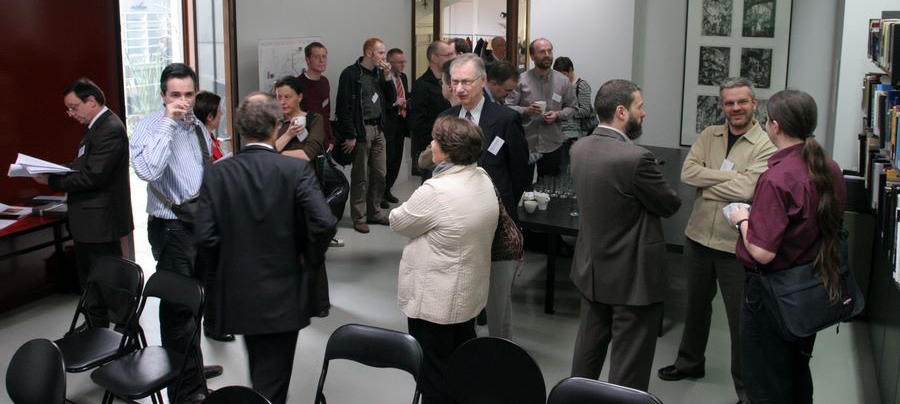
Norbert Streitz
Towards the city of the future: the role of innovative human-computer interaction paradigms
Lecture date: 26 Apr 2010
A series of colourful images flashed across the screen at the start of Norbert Streitz’s lecture to a mixed audience of designers, scientists, engineers and business people in the Namahn design studio – visions of a brave new world where superhighways perch above skyscrapers, the sort of idea that has permeated the arts and occupied scientists, writers, designers and politicians since the early 20th century. Surprisingly, many of these fantasies (household robots, for example) find real echoes in today’s world: the hope, now as much as then, is that ‘technology’ and machines should relieve humans of tiresome everyday tasks.
But one striking aspect of these ‘futuristic’ images is that humans are often missing from the picture. Streitz, scientific director of the Smart Future Initiative (SFI), argued that keeping the human ‘in the loop’ is essential to ensure that the future design of all information, interaction and experiences is people-centered.
This also applies to the cities we live in. While 50% of the world population is already living in urban areas, it is predicted that this will rise to 70% by 2050. What will these cities look and feel like? How will they function and be managed? What role will computers and humans play in this urban age? And most importantly, what kind of a city do we actually want to live in?
There are different models of future cities, the earliest notion being the Digital City (from the 1980s). This was followed by the Ubiquitous City (technology driven), the Smart City (ICT and eGovernment driven), and the Hybrid City (where the real world and the virtual world have equal significance). These are not the stuff of science fiction. Many projects are already happening in Asia, for example, iN-2015 Master plan (Intelligent Nation Singapore), while in Korea it is planned to turn 14 already existing cities into Ubiquitous Cities (u-Cities) and eight new ones are planned. Streitz argued that we should be aiming for what he described as the Humane City where people are empowered and supported by the technology surrounding them. This implies new values (creative and inclusive society, mutual co-operation, responsible citizenship, health and well-being, sustainability, etc.), with an appropriate work-life balance despite unplanned interruptions due to poly-phasic activities and multi-tasking, and a world where technology becomes a mediator of these values and a new economy arises: the experience economy.
Computers ‘as-we-know-them-today’ will play no or only a minor role for certain dedicated tasks in back offices. In our everyday life, computing technology will increasingly blend into the environment, become invisible, and disappear. The Humane City will be a people-friendly environment, where smart artefacts with sensors will collect information from the environment, devices and humans to support our communities based on ambient intelligence. There will no longer be any need to carry devices; the very fabric of buildings will become smart – used as a display to pass information and to provide a comprehensive experience by appealing to all our sensory capabilities. Therefore, information design will have to evolve into experience design. These ideas have already been applied in projects like Roomware®, Ambient Agoras, Ambient Displays, Personal Auras and Informative Art. For Streitz, the ultimate goal is human-human interaction and co-operation, going beyond human-computer interaction in a technology-dominated environment. Designing these environments will require even more interdisciplinary teams and approaches, as we know them already today. But how do people fit in? How are we served, and what rights and tools can be set in place to protect our privacy in this ‘smart’ new world full of sensors monitoring and tracking us? In Streitz’s opinion, guaranteeing a ‘humane’ city as described above requires that designers should be occupied with privacy issues from the outset of any project, and that Privacy Enhancing Technologies (PETs) should be used from the start and not as an element added at the end.
Ironically, many of us may be unaware of just how much we are already monitored, for example, via shop loyalty cards: because we perceive the card as (financially) beneficial, we are willing to trade privacy for increased purchasing power. Will life in the Humane City offering better health, interaction and collaboration experiences, sustainability, fun, well-being and citizenship be as tempting a prospect as a loyalty card? He hopes so, but only the future will tell.
Interview
Download the interview (mp3)

